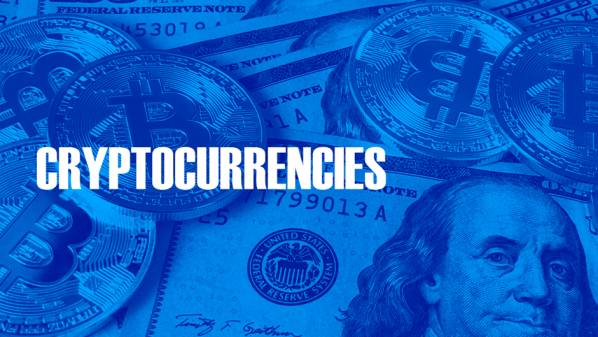
A surge in cases of the Omikron variant of the virus at the start of the year, then a conflict in Russia and Ukraine, followed by inflation hitting the highest in decades, has pushed the Federal Reserve to aggressively raise interest rates and raised fears that the economy could slip into recession.
The U.S core PCE price index for May hinted that inflation may have peaked. U.S inflation was 6.3% in May, the same as in April and still more than triple the expected inflation target of 2%. After the latest inflation data, futures traders continued to bet that the Fed would raise interest rates by another 75 basis points next month, but they also expected the Fed to slow the pace of rate hikes from November and stop altogether in early 2023 interest rates, as there is evidence that the economy is generally slowing and inflation may be about to peak.
Paul Kim, chief executive of Simplify ETFs said “This year has been a tug-of-war between inflation and slowing growth and finding a balance between tightening financial conditions to address inflation and trying to avoid outright panic. I think we are more probably already in a recession, the only question now is how bad will it be? I don't think we're likely to see a soft landing.”
JPMorgan lowered its U.S GDP forecast to very close to a recession after most U.S data this week was weak, most notably a slowdown in consumer spending.

Meta (META.US) warned of the risk of a severe recession, saying operations would be tough in the second half of the year and planning to cut 30% of its workforce. Facebook parent Meta recently warned that it expects a difficult second half of the year. “If I had to bet, I'd say this could be one of the worst recessions we've seen in recent history,” Zuckerberg, the company's chief executive, told employees on Thursday, planning to cut 30% of his workforce this year.
Micron Technology (MU.US) Q3 revenue increased by 16.4% year-on-year, and the industry is expected to encounter headwinds. Micron Technology, the global leader in DRAM and NAND memory chips, announced its financial results for the third quarter of fiscal 2022. Micron's third-quarter revenue was US$8.64 billion, compared with US$7.42 billion in the same period last year, a year-on-year increase of 16.4%. Net profit was US$2.63 billion, compared with US$1.74 billion in the same period last year. Diluted earnings per share were $2.34, compared with $1.52 a year earlier.
Tesla's (TSLA.US) Q2 deliveries will be announced soon, and 250,000 is the line of market sentiment. Taking into account the impact of the closure of Tesla's Shanghai Gigafactory, following the record 310,000 vehicles delivered in Q1, many investment banks expect Tesla's Q2 deliveries to decline. If it exceeds 260,000 vehicles, it will exceed expectations. Citigroup on Wednesday expected 258,500; Deutsche Bank and Mizuho Securities forecast lower, 245,000 and 232,000, respectively.

After the last trading day of June, the price of the largest cryptocurrency Bitcoin fell 38% in a single month, marking its worst monthly performance on record. During the same period, Ethereum, the second-largest cryptocurrency by market capitalization, also fell by 47% in a single month.
Over the past month, the crypto market has experienced a series of thunderstorms. Crypto lending platform Celsius suffered a financial crisis, suspending customer withdrawals on the grounds of encountering “extreme market conditions”. While the famous hedge fund Three Arrows Capital suffered a massacre and its assets suffered a sharp liquidation.
In the past 10 years, Bitcoin has experienced two long periods of “cold winter”. In 2018, Bitcoin plummeted by more than 80% at one point, then rebounded, and finally rose to a peak of $69,000 in November 2021.
According to a Bank of America report, U.S consumers are wary of the crypto market. The bank said internal customer data showed that the number of active crypto users fell from more than 1 million in November 2021 to less than half a million in May this year. Some market players are anticipating a resurgence in Bitcoin and plan to buy the dip. On Wednesday, MicroStrategy spent $10 million to buy 480 bitcoins.
According to coinmarketcap data, the total market capitalization of the crypto market has dropped to around $900 billion, a loss of more than $2 trillion since the beginning of this year.

Spot gold fell by about 1.80% this week, which was aggravated compared with the 0.81% decline last week. This week, it fell by about $33 per ounce setting a new low for six consecutive weeks. After the speech of Federal Reserve Chairman Powell at the European Central Bank and the subsequent US economic data released, the direction of gold prices was pointed out and determined the current price of gold.
The Fed's most important PCE data released this week showed that May increased by 6.3% year-on-year, and inflationary pressure was comparable to April, but the core PCE index showed the lowest increase since November 2021. Obviously, inflation in the United States remains at a high level, although the core PCE declined slightly in May, the core PCE did not include energy and food factors, and the overall PCE including the two remained the same as in April and did not improve. U.S. economic data prompted Powell to unequivocally release a hawkish stance, showing that controlling inflation is the top priority of the Fed's mission and demonstrating its determination to do whatever it takes. This made the market's expectation of rising interest rates immediately heated up, and it was certain that it immediately suppressed the price of gold. On the other hand, worries about the economy falling into recession are bound to intensify at the same time. People may be more worried that if the Fed fails to curb inflation, gold will be in turmoil. The function of hedging during the period will be more prominent.

On Friday, U.S crude futures fell 0.20% to $105.55 a barrel and Brent crude futures rose 0.02% to $109.06 a barrel. This week, the price of U.S oil rose and fell, and the price fell into volatile trading. While the market is looking forward to an increase in output at the OPEC meeting this week, OPEC appears to be lacking in capacity to increase production. However, the growing pressure for an economic slowdown against a backdrop of global central bank tightening has weighed heavily on oil prices. However, the situation in Russia and Ukraine is still tense, the Iran nuclear talks have not progressed, and the situation in Libya is tense. These bullish factors support oil prices.
The Organization of the Petroleum Exporting Countries and its allies, the OPEC+ alliance, approved a plan to boost oil production, completing a supply recovery halted during the pandemic, while delaying discussions on the next steps. Oil prices were little changed after the decision, as widely expected.
Some analysts pointed out that due to insufficient investment in some oil-producing countries, OPEC+ may not be able to complete the original production target now. In the past two years, OPEC+ producers have supplied more than 500 million barrels of oil to the global market below their pledged levels. That added to concerns about OPEC+'s ability to stabilize global oil markets. OPEC+ has struggled for months to supply the market with promised oil as some members struggled with investment cuts and operational problems. Only a few core members of the Persian Gulf still have spare capacity, but this spare capacity is far from enough to make up for the loss of crude oil production in the global market due to sanctions against Russia.

The dollar index strengthened again after a week, with a cumulative gain of nearly 1.1% to 105.266. Despite concerns about a slowdown in the U.S economy driven by the Fed's aggressive tightening policy, the U.S dollar will be more of a safe-haven currency in the face of the risk of a global recession. The odds of the U.S slipping into recession without dragging the rest of the world down are extremely low.
The euro was down more than 1.2 percent against the dollar at 1.0423. Although the European Central Bank will start raising interest rates in July for the first time in nearly 11 years to cool down fiery inflation, compared with the Fed, the European Central Bank's decision-making faces greater limitations. Sterling continued to be sold off, falling nearly 1% against the dollar to a fresh two-week low of 1.2048. The reason is that investors are concerned about a severe slowdown in the UK economy, overheating inflation and increased political uncertainty related to Brexit.
USD/JPY is now almost flat at 135.20 despite the intraday high of 136.997 since September 24, 1998. Although the stance of preventing excessive depreciation of the yen has not changed, the Japanese authorities are also turning their attention to the risk of a sharp rise in the yen, and increasingly have to beware of a rebound in the yen.
OneProSpecial Analyst
Buy or sell or copy trade crypto CFDs atwww.oneproglobal.com
The foregoing is a personal opinion only and does not represent any opinion ofOneProGlobal, nor is there any guarantee of reliability, accuracy or originality in the foregoing.
Forex and CFD trading may pose a risk to your invested capital.
Before making an investment decision, investors should consider their own circumstances to assess the risks of investment products. If necessary, consult a professional investment advisor.
www.oneproglobal.com
Leave a Reply